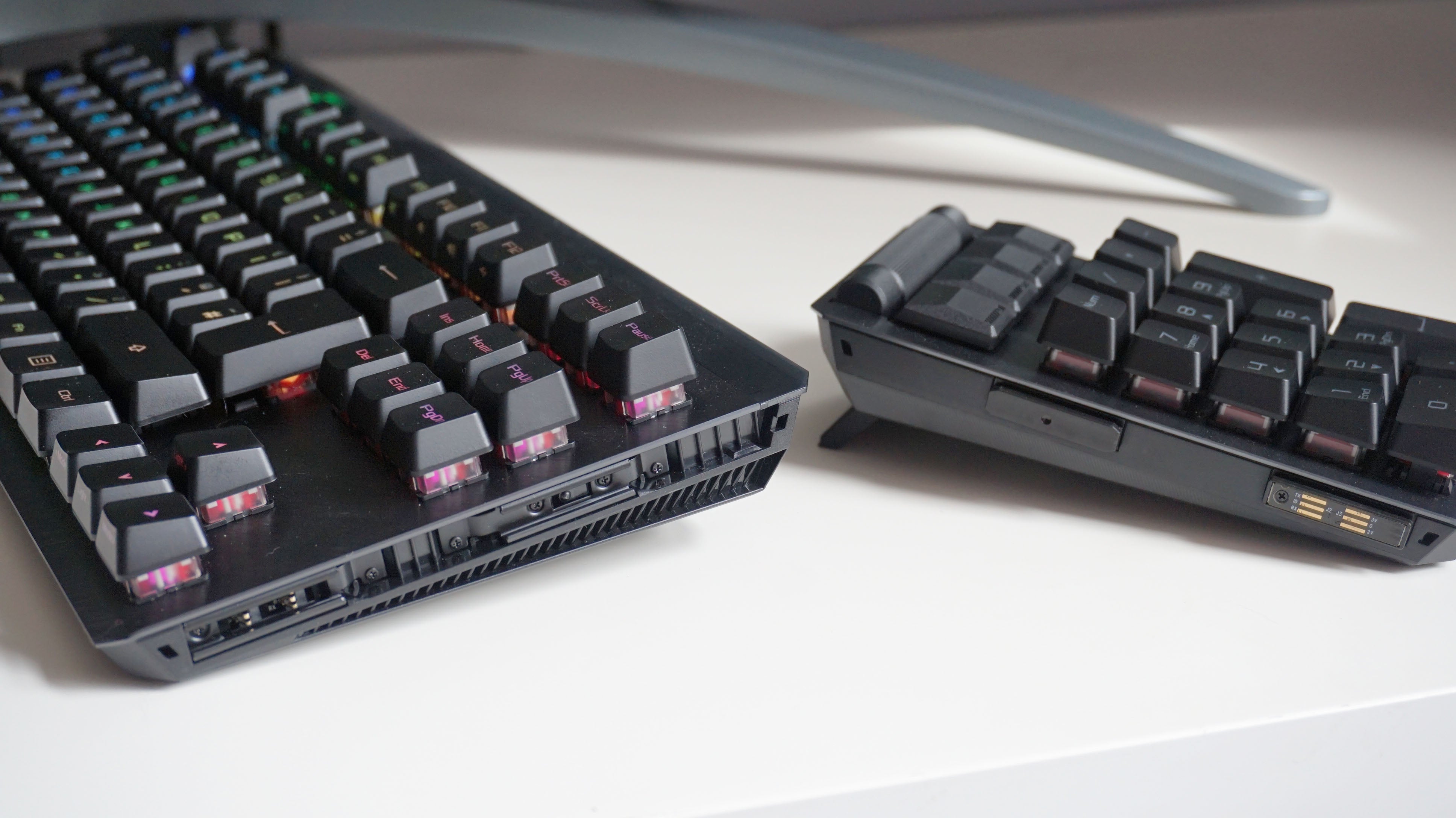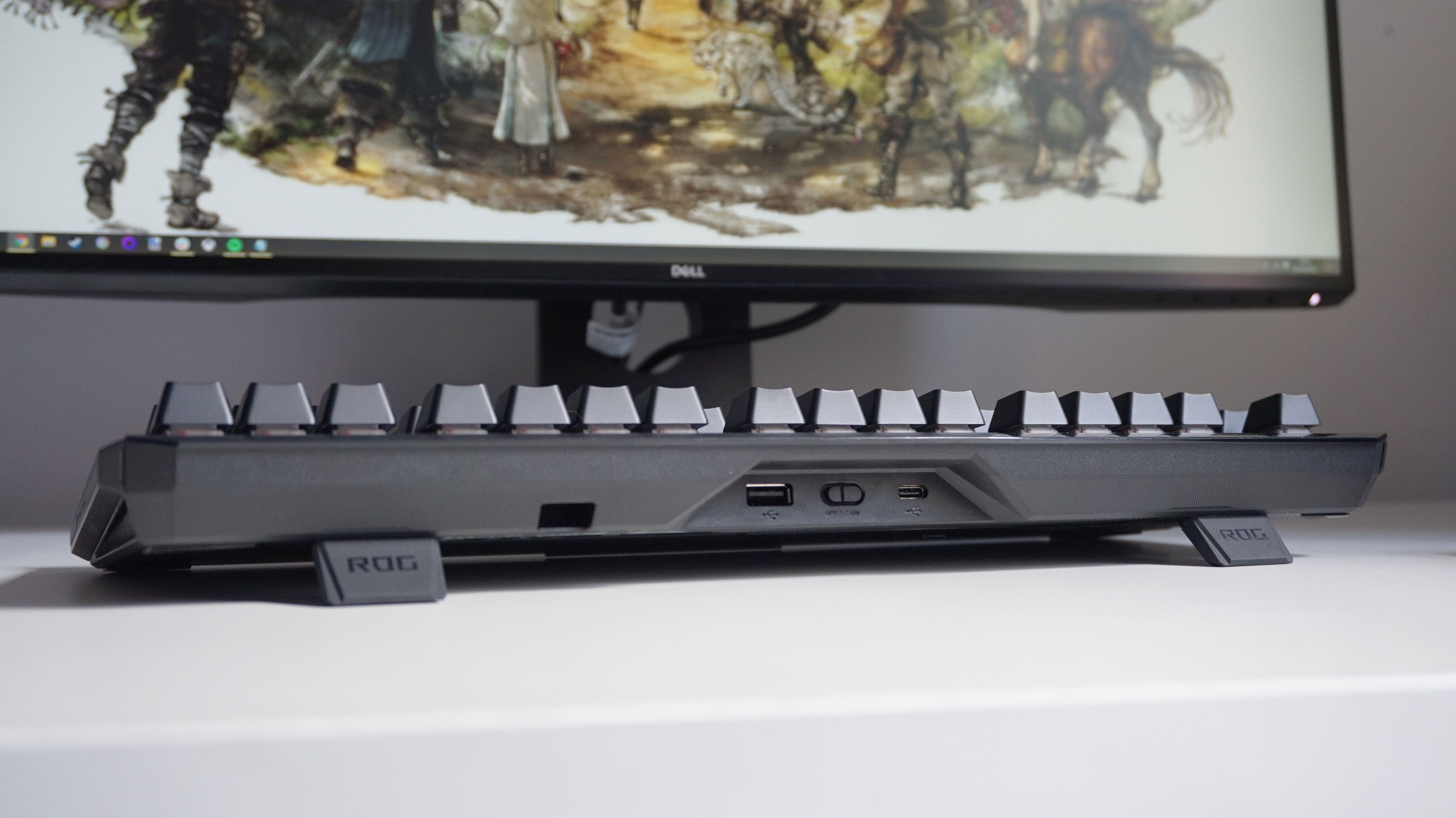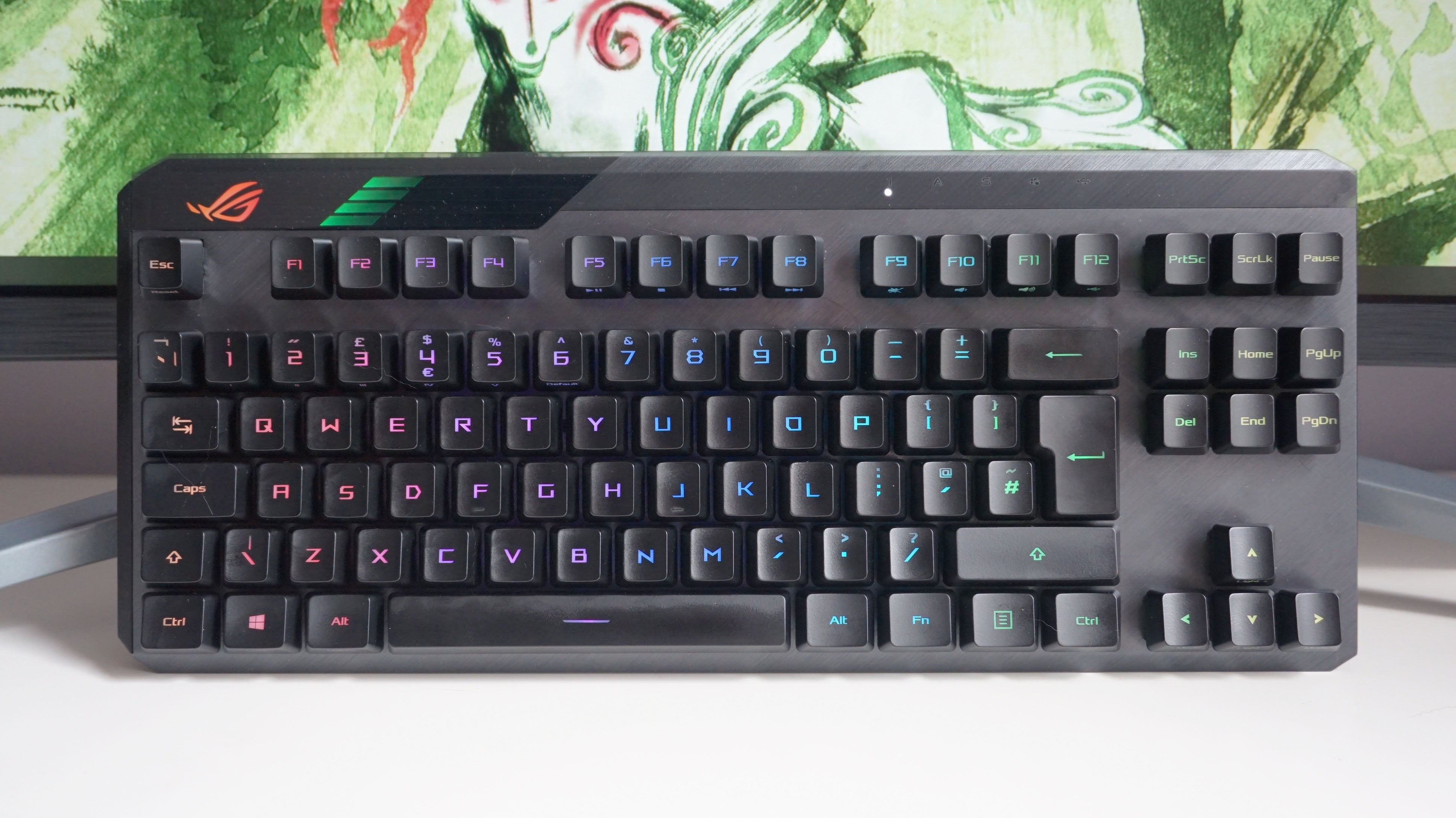It’s still crazy expensive, going for an eye-watering £230 / $270 at time of writing, but it’s arguably one of the most flexible wireless gaming keyboards to have graced my desk in recent months. Like the original Claymore before it, the Claymore II comes with a detachable number pad you can slot onto either side of the main body, only this time it comes a wider, more tactile volume wheel and adds four customisable hotkeys to the mix for those all-important macro commands. It also comes with a rather nice detachable wrist rest, too, which you can either latch on to the bottom of the keyboard magnetically or have loose on your desk. The revamped number pad isn’t the only thing that’s changed on the Claymore II. Asus have also ditched the original’s Cherry MX switches for their own ROG RX optical mechanical switches this time, too. The Claymore II will come in both ROG RX Red and RX Blue flavours at launch, the former being their take on Cherry’s linear MX Red switches, and the latter their clacky, tactile MX Blues. My review sample came with RX Reds, and sure enough, they feel pretty darn similar to their Cherry counterparts. They’re perhaps a tad louder than your typical MX Red, and their added optical-ness (which uses a beam of light to register a key press instead of a physical mechanism) also means they need only the lightest of touches for a keystroke to actually register. Indeed, I’ve accidentally rested my thumb on the space bar a couple of times when I’ve been looking at something onscreen, and then suddenly wondered why I either can’t scroll up or down any more or why the next word I’ve just started typing is several inches away from the last one. Turns out that little bit of thumb resting I was doing was actually pressing down just hard on the space bar for it to think I was doing a big long space. It’s not like it happened loads of times and became an annoyance during my testing, but it’s definitely something I’ve noticed happening more on this keyboard than the last one I had on my desk, for example. Aside from this, though, the ROG Claymore II is an absolute delight to type on and play games with. While you can just press down the teensiest of amounts to get your key presses in, there’s also loads of travel and tactile feedback if you want to be a bit more heavy-handed with it, and Asus’ super-fast 2.4GHz wireless technology meant that WASD movements and any other key presses I needed in-game registered immediately. It also woke from sleep immediately, too, allowing me to get back to work straight away rather than waiting for my words to catch-up onscreen. To me, the Claymore II felt just as responsive as using a traditional wired mechanical keyboard, and I enjoyed having the extra freedom to move it around my desk without worrying about wire strain or my cats accidentally yanking the cables out when they get stuck behind my monitor (which happens a lot when they’re pestering me for dinner, lemme tell ya). Asus haven’t skimped on the RGBs here, either, with RGB backlighting on each key, a little Asus ROG logo in the top left corner, and its four-tiered battery bar next to it (which will flash red once the battery goes below 25%). There are also five small white LED dots above the Fn keys telling you when the Num, Caps and Scroll Locks are enabled, as well as whether the Windows key is locked, and whether USB passthrough is enabled. Yep, that’s right. The ROG Claymore II supports USB passthrough for your mouse or USB headset. Sure, you’ll have to sacrifice its wireless capabilities to take advantage of this feature, but that’s why it comes with both a USB-C port and a USB Type-A port, so you can use the former for charging and USB passthrough, and the latter for connecting your external device. It sounds a bit counterintuitive, I know, but I like that it gives you the option all the same. Of course, the keyboard won’t charge quite as quickly with USB passthrough enabled, but I rarely found this to be an issue. The ROG Claymore II’s battery life is pretty good as wireless keyboards go, with Asus reckoning you’ll get up to 47 hours out of it with RGB lighting switched on and the number pad attached. For comparison, my current favourite wireless gaming keyboard, the superb Logitech G915 Lightspeed Wireless, only lasts 30 hours with RGB lighting on, putting the ROG Claymore II at a distinct advantage here. The ROG Claymore II also comes with a detachable magnetic wrist rest, giving it another leg up over the rest-less Logitech G915. It’s long enough to accommodate the entire width of the keyboard if you’ve got the number pad attached, but you can also just place it wherever it’s most comfortable. I often had it sitting a couple of centimetres away from the keyboard during my testing, and again, I loved the freedom and flexibility this gave me when positioning it on my desk - especially when my cats demanded their morning chin scritches. Its leatherette finish is lovely and soft, too, providing enough support for my wrists and palms at all times. Admittedly, I’m still not overly in love with the ROG Claymore II’s chunky, angular design (in this area, the Logitech has the Asus beat), but I definitely like it a lot better than the try-hard Aztec-style design of the original Claymore. The cosmic pattern designs and slightly shonky-looking visible screws of the old number pad are all gone, replaced instead by an elegant, brushed metal finish and chamfered edges. It’s still a little plasticky in places, which is a shame given its high price, but overall it’s relatively inoffensive. Ultimately, the Asus ROG Claymore II’s greatest attraction isn’t its design, but the sheer amount of flexibility it offers. Want a wireless tenkeyless keyboard that can go the distance? Sure thing. Also want a wireless keyboard with a full-sized number pad and volume wheel, and a detachable wrist rest? It’s got that too. Heck, if you really feel like it, you can use it wired and use its passthrough function to connect your mouse up as well. It covers every possible base, all while offering great performance and a fantastic typing experience - and for some, that may well be worth its high price. If you’d rather save yourself some cash, though, then I still think you’ll be perfectly happy with the £150 / $250 full-sized Logitech G915 Lightspeed Wireless. Its battery life may not be quite as good, but it’s still a beautifully designed keyboard that’s great for games and typing alike.


